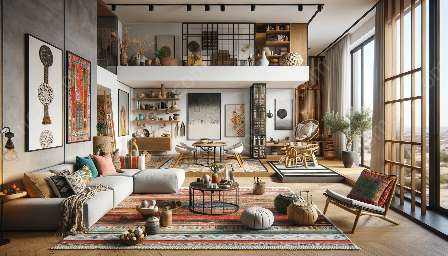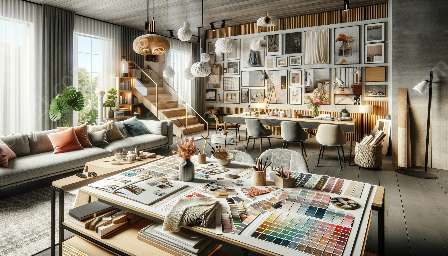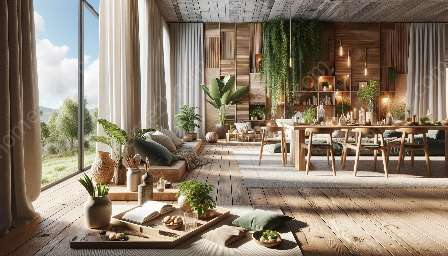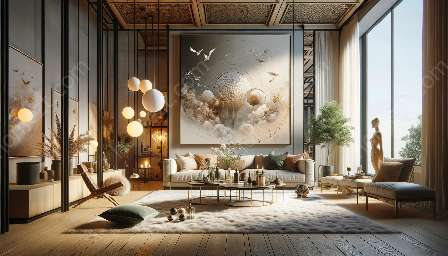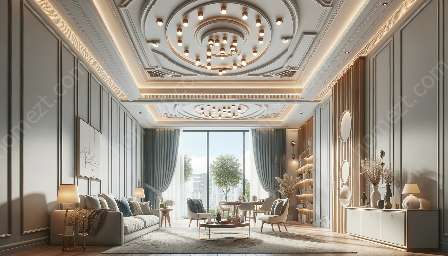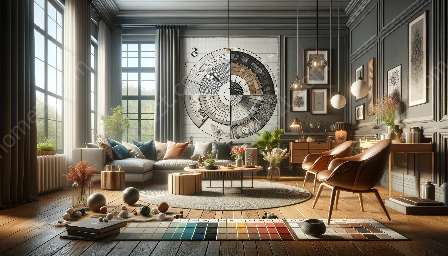Design elements and principles play a crucial role in creating attractive and real spaces in interior design and home furnishings. In this comprehensive guide, we will explore the fundamentals of design and how they can be applied to enhance the aesthetic appeal of living spaces.
The Fundamentals of Design Elements
Design elements refer to the basic units used to create a visual composition. These elements include line, shape, color, texture, and space. Understanding the characteristics and properties of each element is essential for designing harmonious and balanced interiors.
1. Line
Lines are fundamental to design as they define the form and structure of objects. In interior design, lines can be found in architectural details, furniture, and decorative elements. Horizontal lines create a sense of stability, while vertical lines emphasize height and strength. Diagonal lines add movement and dynamism to a space, while curved lines introduce softness and grace.
2. Shape
Shapes are enclosed areas that are defined by boundaries. They can be geometric or organic and play a significant role in defining the visual appeal of a space. In interior design, furniture, room layouts, and architectural features contribute to the overall shapes within a room.
3. Color
Color is a powerful design element that can evoke specific moods and emotions. Warm colors such as red, orange, and yellow create a cozy and energetic ambiance, while cool colors like blue, green, and purple promote a sense of calm and tranquility. Understanding color theory and the psychological impact of colors is essential for selecting the right color palettes in interior design.
4. Texture
Texture refers to the surface quality of materials and elements within a space. Smooth textures convey a sense of elegance and sophistication, while rough textures add depth and visual interest. Incorporating a variety of textures, such as wood, metal, fabric, and glass, can enrich the tactile experience of a room.
5. Space
Space is the foundation of interior design and refers to the physical and visual dimensions within a room. The strategic use of positive space (occupied areas) and negative space (empty areas) contributes to the overall balance and functionality of a space.
The Principles of Design
Design principles guide the arrangement and organization of design elements to achieve aesthetically pleasing and functional spaces. These principles include balance, rhythm, emphasis, proportion, and unity.
1. Balance
Balance is the distribution of visual weight in a room. Achieving balance involves arranging elements to create a sense of equilibrium. There are three main types of balance: symmetrical balance, asymmetrical balance, and radial balance. Symmetrical balance creates a sense of stability and formality, while asymmetrical balance adds visual interest and informality. Radial balance emanates from a central point and creates a sense of dynamic movement.
2. Rhythm
Rhythm in design refers to the visual flow and repetition of elements within a space. It can be achieved through patterns, colors, or textures to create a sense of continuity and movement. Rhythm adds a sense of harmony and cohesion, guiding the eyes through a space.
3. Emphasis
Emphasis is about creating focal points in a room to draw attention and create visual interest. Through the use of contrast, color, scale, or unique elements, designers can direct the viewer's focus to specific areas within a space.
4. Proportion
Proportion deals with the scale and relationship between elements within a room. Proper proportion ensures that all design elements work cohesively and maintain a sense of harmony. The golden ratio and the rule of thirds are common principles used to achieve visually pleasing proportions.
5. Unity
Unity refers to the cohesive and harmonious arrangement of design elements within a space. It ensures that all elements work together to create a sense of wholeness and completeness. By aligning design elements with a common theme or style, designers can create a unified and visually appealing environment.
Application in Interior Design and Home Furnishings
Understanding the design elements and principles is essential for interior designers and homeowners seeking to create attractive and real living spaces. When applied effectively, these concepts can transform ordinary rooms into captivating and functional environments.
Creating Balance with Furniture and Accessories
In interior design, achieving balance through furniture placement and decorative accessories is crucial. By carefully considering the distribution of visual weight, designers can create a sense of equilibrium within a room. Symmetrical arrangements, such as matching pairs of furniture, convey a formal and classic aesthetic, while asymmetrical arrangements add a contemporary and dynamic touch.
Using Color and Texture to Enhance Ambiance
The strategic use of color and texture can significantly impact the ambiance of a space. Warm color palettes combined with plush and textured fabrics can create inviting and cozy living areas, perfect for relaxation and socializing. In contrast, cool color schemes paired with sleek and smooth textures can establish serene and sophisticated atmospheres, ideal for quiet contemplation and introspection.
Applying Proportion and Scale in Room Layouts
Consideration of proportion and scale is crucial when designing room layouts and selecting furnishings. Properly scaled furniture and decor ensure that each element complements the overall composition, resulting in visually pleasing and functional arrangements. By adhering to the principles of proportion, interior designers can create spaces that feel harmonious and proportional to human scale.
Unity through Cohesive Design Themes
Creating unity within a space involves aligning design elements with a cohesive theme or style. Whether it's through a consistent color scheme, a specific design motif, or a cultural influence, maintaining unity in design choices fosters a sense of wholeness and completeness. Harmonizing furniture styles, coordinating fabric patterns, and integrating complementary decor items contribute to a unified and well-curated interior.
Conclusion
Design elements and principles form the foundation of interior design and home furnishings. By understanding the fundamentals of line, shape, color, texture, and space, as well as the principles of balance, rhythm, emphasis, proportion, and unity, designers and homeowners can create visually appealing, harmonious, and functional living spaces. The thoughtful application of these concepts can elevate the aesthetic quality and realness of interiors, ultimately enhancing the overall experience of home living.
